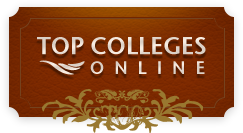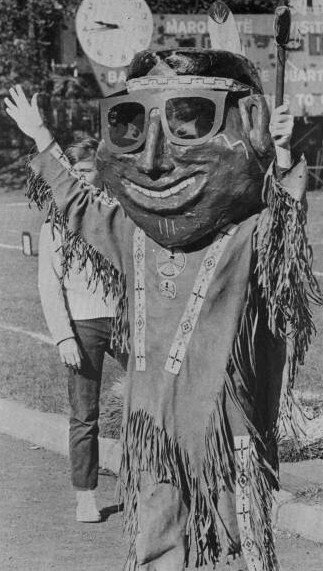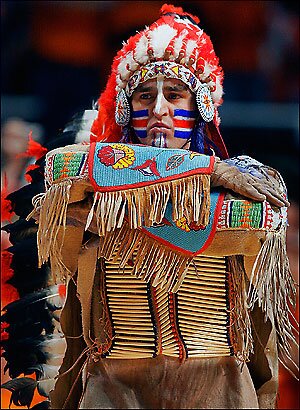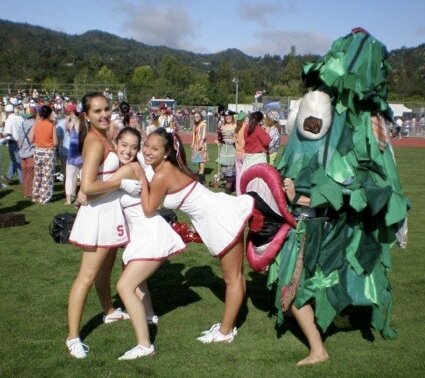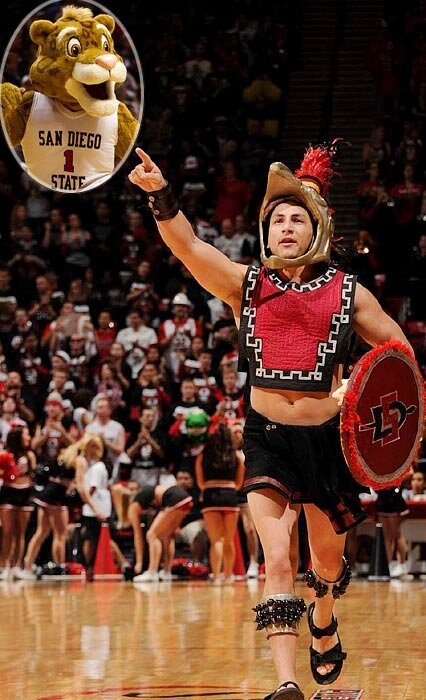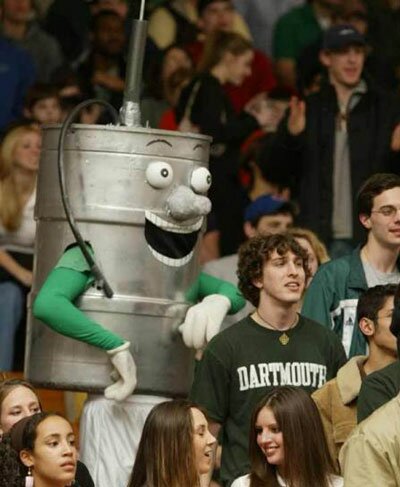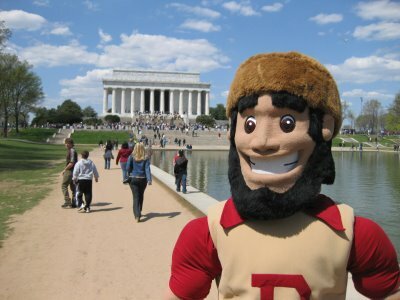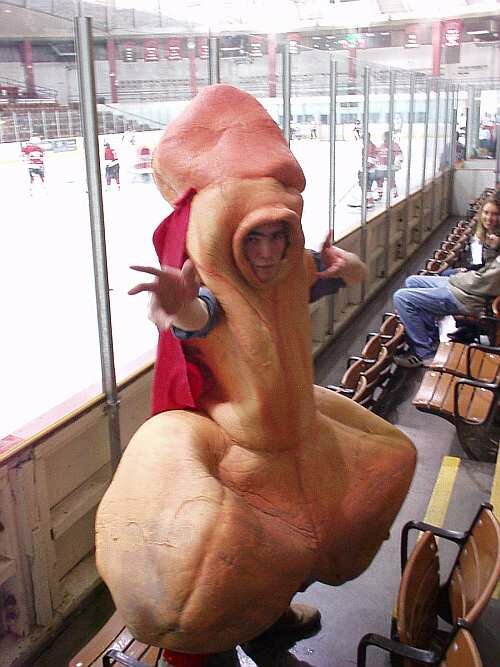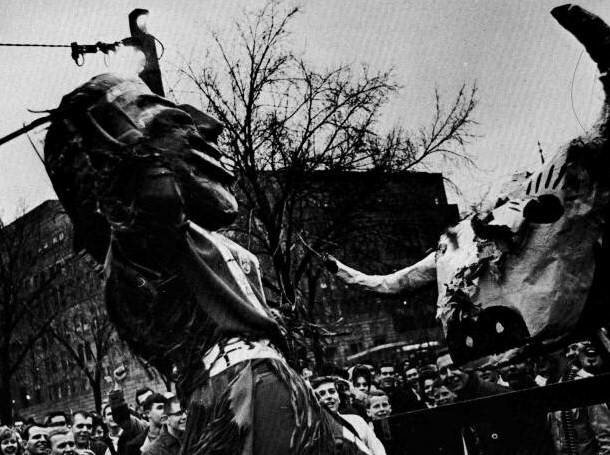College mascots have a long history and are a fixture at half-time shows and pep rallies throughout the country. Yet of course they have not been without their controversy, most notably in terms of the appropriation of Native American culture for student spirit.
In today’s more sensitive world, many such mascots have been retired to be replaced with less offensive imagery. Take a look at the most controversial college mascots in US history.
10. Stanford
Stanford has been officially mascot-less since 1972, when the “Stanford Indian” name, which had been adopted in 1930, was abandoned due to being deemed offensive to Native Americans. Since that time there have been some efforts to bring back more respectful versions of “the Indian,” but in 1981 the then president announced that the University was to be represented only by the color cardinal. It being nearly impossible to successfully anthropomorphize a shade of red, students have taken matters into their own hands and created a bizarre and at times disquieting tree, which is often found to be exceedingly drunk or otherwise engaged in disorderly conduct.
9. University of Illinois
The former University of Illinois mascot was the Native American Chief Illiniwek, whose first appearance was in 1926. The mascot was intended to reference the Illiniwek, 13 Native American tribes who gave the state of Illinois its name. Chief Illiniwek, as portrayed by a student, performed dances at half-time during various sporting events. Protests against the mascot began in 1989, and various academic departments, political groups and even the Illinois state legislature took sides. A student referendum in 2004 found that 69% of those who voted supported the Chief as a mascot. The views of Native Americans were also mixed, but by 2006 the Chief of the Peoria Tribe, the closest relatives of the Illiniwek, reiterated their opposition to his use. In 2005, the NCAA banned schools with offensive mascots, of which the University of Illinois was one, and Chief Illiniwek was retired in 2007.
8. Ithaca College
The Ithaca College Bombers’ unofficial mascot served for twenty years, but in the post 9/11 world a mascot who carries explosives is less than politically correct. While there had been other unofficial mascots, including a unicorn, Bomber Man was the most recognizable, but when the college sought suggestions for an official mascot, they decreed that any “war-related proposals” were out of bounds. Students and alumni found this to be a poor decision, but in the end the only mascots put to a vote were a phoenix, a lake beast and a goggled flying squirrel, none of which had much to do with the school’s nickname. In the end, the administration decided to simply abandon the idea of having any mascot at all.
7. University of Mississippi
The University of Mississippi had a very old-school mascot — a confederate soldier. While it is fair to say that this mascot certainly had some connection with the state’s history, some, such as Representative Erik Fleming, thought that the connotations were too old-fashioned, especially for African American students at the university. Some students disagreed, but the Athletics Director, Pete Boone, wasn’t bothered about his retirement, pointing out that an old man who walks with a cane might not be the best mascot for sports. In 2010 he was replaced with a black bear, although what that has to do with sports is unclear.
6. San Diego State
The scantily clad Monty Montezuma was known for his exposed skin and exuberant support for his school. However, in 2001 the president of the school announced that their mascot would be replaced by a more dignified Aztec warrior. Native American students had demanded that the “Aztec ruler” be banned, while other students had supported his retention. Unlike other schools involved in mascot controversies, San Diego State opted to revamp the mascot rather than ban it outright, as according to president Weber, the Aztecs have no known direct descendants.
5. Dartmouth College
Dartmouth College was represented by the “Indian” until the 1970s, when it was retired, and since then has not had an official mascot. A moose was almost introduced in 2003, but lost out in a poll to the choice of “no mascot.” Faced with a lack of representative, students from a Dartmouth magazine came up with Keggy the Keg, a large anthropomorphic keg of beer, to represent their school’s beer-swilling frat house culture; “the most obvious Dartmouth stereotype.” As a humor magazine, their intention was to come up with an unacceptable mascot that was not racist, sexist or biased. Although he got a mixed reaction, the student body president personally endorsed Keggy, and the Dean of the College praised the students’ creativity.
4. University of Denver
Denver Boone served faithfully as the University of Denver mascot for thirty years, until he was retired in 1998. Designed by a Walt Disney artist, the otherwise cutesy character was seen to be unsuitable for several reasons. His association with the Division II era of the University’s teams was disquieting given that the teams had now moved up; he was also held to be discordant with the University’s focus on its talented female athletes; and lastly, some Native American students were concerned that he was intimately associated with and representative of the extermination of Native American culture by early settlers. He was replaced with a red-tailed hawk, but by 2006 a movement to bring him back was gaining steam, and in 2008 polls showed that almost 90% of students wanted him to return. Boone now serves as an official “student mascot” although he is not endorsed by the university.
3. University of North Dakota
When the NCAA announced that it would be sanctioning schools with offensive nicknames, logos or mascots, the University of North Dakota Fighting Sioux found themselves in the firing line. UND obtained an injunction and in 2007 reached an agreement that would give them until 2010 to obtain support from the Sioux tribes of North Dakota and hence avoid a ban. They failed to gain full support, and in April 2010 the State Board of Higher Education ordered them to retire the mascot. In a surprise twist, the State Senate voted in 2011 to order UND to retain the mascot and the bill was signed into law by the Governor. The bill was then struck down in November of the same year.
2. Rhode Island School of Design
With a hockey team known as the “Nads” and a basketball team known as the “Balls,” what other mascot could be more suitable than a giant anthropomorphic penis and testicles? The Rhode Island School of Art and Design certainly knows how to stick on-message with this remarkably well-designed mascot costume, although unsurprisingly Scrotie’s not college approved. While it may prompt awkward questions from the younger fans, he is certainly an unusual character and continues to attend all their games.
1. Marquette University
When it comes to offensive portrayals of Native Americans, Marquette University’s Willie Wampum takes the biscuit. With his oversized papier maché head and foolish grin, it is hard to see how anyone could ever have thought he was an acceptable face for the school. In fact, he performed at basketball games for a decade before he was retired in 1971, after the university administration realized that he might be offensive. Twenty-two years later, the Marquette “Warriors” were renamed the “Golden Eagles” for similar reasons.
